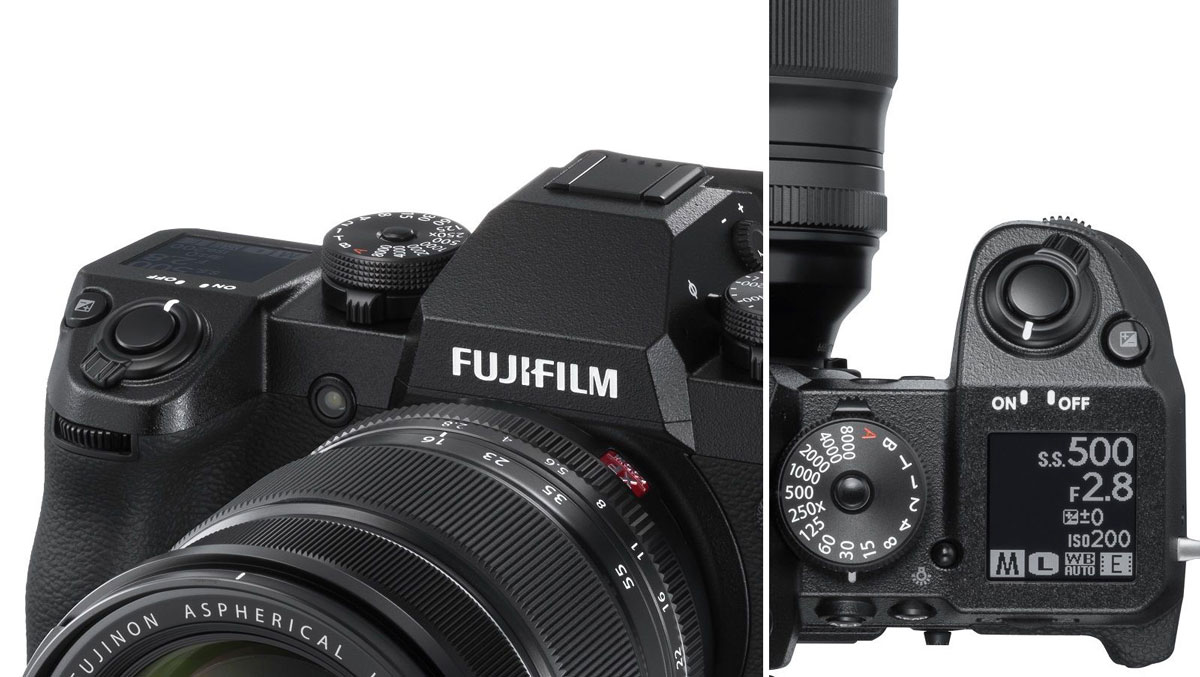Fuji X-H1 Early Review: Fuji's First High-End Mirrorless Video Camera
Fuji's latest offering, the Fuji X-H1, is stuffed to the gills with powerful video capabilities – primed to compete with the GH5 and Sony A6500.
Slated for release in March 2018, the Fuji X-H1 indicates a massive – and welcome – shift in Fujifilm's business strategy. Mirrorless video cameras, like the Panasonic Lumix GH5 or Sony's Alpha line, have become incredibly popular in a photography-literate, vlog-saturated world.
Fujifilm's gotten wise to this over the past few years. In 2018, they gifted the X-Pro 2 with an upgrade from 1080p to 4K via firmware (an unprecedented technological feat). They've also manufactured a battery grip for the X-T2 for longer shoot times. But the general assumption was that, if any, the X-T line would evolve in to the definitive Fuji video body.
Likely in an effort to keep the slim ergonomics of the X-T line intact, the Fuji X-H1 emerges as a thicker, heavier, and substantially more powerful video mirrorless camera with some pretty insane capabilities.
The feature set in this new line is immense, so let's break it down.
The Fuji X-H1 Review: Tech Specs
- 24.3 megapixel APS-C X-Trans CMOS III sensor (6000 x 4000)
- 5-Axis Integrated Image Stabilization (IBIS)
- Professional video functions (including Cinema 4K)
- DCI 4096 x 2160 cinema 4K at 200Mbit/s bitrate
- F-LOG internal recording with Rec.2020 wide colour gamut
- New high-speed LSI – X Processor Pro
- Large EVF with 3.69 million pixels
- 3″ foldable and tiltable touchscreen with 1.04 million pixels
- 1.8″ monochrome top-panel display
- Robust magnesium alloy weather sealed chassis
- Splash-proof, dust-proof and cold resistant to -10 degrees Celsius
- Improved AF algorithm, particularly when zooming
- Dual memory card slot
- Film simulation modes (with new ETERNA mode)
On paper, the specs don't exactly threaten the GH5 or the Sony 7R III.
But the real magic of the X-H1 is in the subtleties.
5-Axis IBIS
When using Fuji's native lens line-up – or likely, any lens or adapter that passes off focal length information to the sensor – you'll have access to 5-Axis IBIS (In-Body Image Stabilization), similar to the Panasonic, Sony, and Olympus offerings.
This feature is vital to smooth hand-held recording – think of it as a built-in gimbal. Time will tell if the stabilization technology is particularly prone to the 'fun-house' warping that the Olympus is plagued with.
Insane Slow-Motion Capability
When shooting in 1080p, you'll be able to shoot at 120fps. This has major implications for slow-motion footage, allowing you to slow your footage in post down to never-before-seen frame-rates in the Fuji universe.
4k shooting won't be able to touch the 120fps frame rate, but upscaling 1080p slow-mo to match your 4K is a standard practice in the mirrorless video camera world.
Improved Autofocus in Low Light
According to the official press release, the X-H1 offers a reengineered autofocus technology optimized for low-light shooting situations in video (or AF-C) mode. Most video buffs shoot manually, but it's a welcome addition all the same.
Fuji's also teased flicker reduction and a first curtain electronic shutter in the X-H1, which will come in very handy for anybody shooting video under indoor or fluorescent lighting.
Battery Grip for Boosted 4K Recording Times
This ergonomic accoutrement not only enhances the ergonomics and comfort of the Fuji X-H1 – it also boosts the maximum recording time in 4K to 30 minutes.
The jury is still out on how long the X-H1 can record in 4K without this grip – and even then, 30 minutes isn't much to write home about.
F-LOG with Rec.2020 Color
A new, proprietary codec – how exciting! We'll need some time to understand exactly how powerful it is, but with Fuji's color technology, it's a safe bet that your video files will have insane latitude in post.
On top of that, Fuji X-H1 exclusively offers a new low-contrast, subtle color emulation mode built specifically for video called "Eterna".
"Should I Buy a Fuji X-H1?" – Final Thoughts
The reasonable answer: we'll see. This thing blows the X-T2 clear out of the water in terms of both still and video capabilities, but the added bulk eats in to the slim form-factor that Fuji is so beloved for.
The hasty answer: yes, you should buy it... if:
- Video is your priority over stills.
- You have a high-quality suite of Fuji lenses.
If you haven't already invested in Fuji's line-up of lenses (though to be fair – you should be), the X-H1 may not be the ideal mirrorless video camera for you. The GH5 specifically seems to outpace the X-H1 at almost every benchmark – though we'll see if, as expected, Fuji's color science closes that gap. But make no mistake: it's not that The X-H1 is worse than the GH5, it just may not be a reason to switch to a new ecosystem. If you're a Fuji video shooter, this is the camera you've been waiting for.
It's been encouraging to see Fujifilm recognize their strong competitive advantage in their top tier native Fuji X lenses. The X-Pro 2's 2017 firmware update offered 4K video. The X-T2's battery grip supported lengthier and more ergonomic shooting. But the X-H1 – specifically the game-changing 5-axis IBIS and Rec.2020 codec – is sure to become their definitive video mirrorless camera.
However, Fuji's decision to cannibalize their X-T line – the current Fujifilm answer to video mirrorless cameras – is puzzling. A $300 price jump isn't quite enough to differentiate the market.
With the Fuji X-H1, the X-T line's edge over the X-Pro 2 becomes questionable. We'll see how it plays out for them – but it's certainly exciting to watch such a hungry newcomer execute their business strategy – and offer us powerful new technology!



